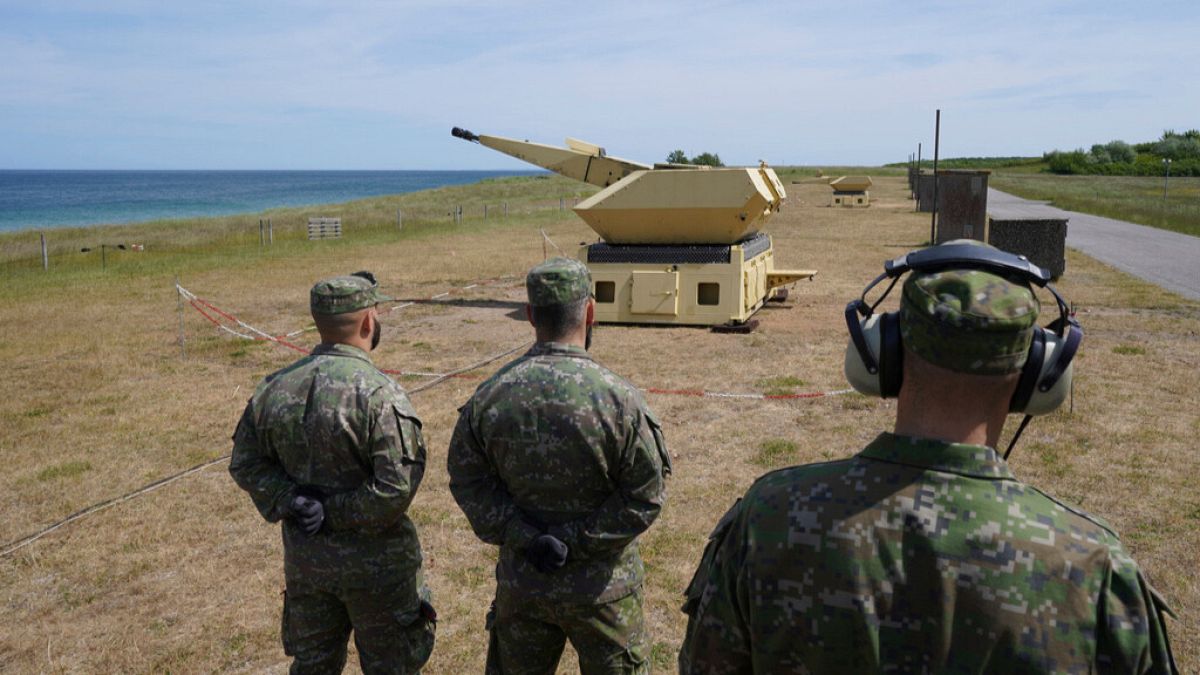Education
School District Woes Likened to ‘Environmental Racism’ in Flint, Mich.

Students and staff in the East Ramapo Central School District, about 30 miles north of New York City, cannot drink the tap water in any of the public school buildings, according to a new state-mandated survey, and the chronic state of disrepair has prompted calls for a takeover of the school system.
The East Ramapo public schools serve more than 9,200 K-12 students, and all 13 school buildings received a failing rating in a survey of building conditions completed by a New York-based architecture, engineering and construction management firm. The district’s school administration building also received a failing rating, and other buildings in the district received unsatisfactory ratings.
It would cost more than $230 million to make all the necessary repairs, the firm, CSArch, estimated.
Lead was detected in the water in many of the schools in 2016, and some taps and water fountains were shut off at the time. Tap water is available now for hand-washing and cleaning, but students and staff must rely on bottled water and water from filling stations for drinking, according to a spokesperson for the district.
The situation is “reminiscent of the environmental racism seen in Flint, Michigan,” the New York Civil Liberties Union, along with 24 other organizations, wrote in a letter to Gov. Kathy Hochul and other officials demanding that the state take over the school district.
They noted that the schools are attended primarily by Black and Latino students.
“Much like Flint, the lead in the water at East Ramapo public schools was discovered seven years ago, yet it remains unaddressed,” the letter reads.
Dr. Clarence G. Ellis, the superintendent, said the survey showed the need for “significant upgrades.”
“We are reviewing different financial options to make the necessary improvements quickly, especially ones that directly impact the health and safety of our students and staff,” he said in a written statement.
The concern in East Ramapo, located in Rockland County, comes at a time of heightened scrutiny about lead in water. More than 900,000 households in New York City might be receiving water from a lead service line, according to a recent report by the New York City Coalition to End Lead Poisoning.
Exposure to lead, which is a neurotoxin, can damage the brain and nervous system, particularly in babies and small children. Lead poisoning can cause behavioral problems, learning disabilities and a decline in measured intelligence levels.
Every school district in New York was required to complete a building survey between 2020 through 2024, and then again every five years. East Ramapo’s survey was scheduled for 2022. The New York Times obtained a summary of the firm’s survey dated June 20, 2023.
The survey findings were first reported by The Journal News.
“It is unthinkable for New York to tolerate such deplorable, dangerous conditions for the students in East Ramapo schools,” Johanna Miller, the director of the Education Policy Center at the New York Civil Liberties Union, said in a statement.
Lead was found in at least nine of the district’s buildings in 2016, leading officials to shut off a number of water sources, including water fountains and various faucets used for drinking and cooking. Purified water dispensaries were installed, and signs in English, Spanish, Creole and Yiddish urged students and staff not to drink the water.
J.P. O’Hare, a spokesman for the State Education Department, said in an email that the department was working with state-appointed monitors to “ensure progress continues and the educational rights of every East Ramapo student are met,” adding that there has been “increased oversight and scrutiny” of the district over the last several years.
The school district is spending nearly $91 million of federal Covid-19 response money on building improvements, which is more than any other district in the state, Mr. O’Hare said, adding that “there still is much work to do.”
The district’s public schools have been in disrepair for years. In 2014, a monitor appointed by the state said the board, which has long been dominated by Orthodox Jews, had shown favoritism to private schools in the district, which are attended primarily by Orthodox Jewish students.
There were other issues beyond those pertaining to the contaminated water highlighted in the report: Five East Ramapo schools had kitchen ventilation hoods that were unsatisfactory. There was evidence of vermin at four schools, and the majority of schools had ventilation systems and HVAC control systems that were unsatisfactory.
One of the schools in the district, Spring Valley High School, closed in 2021 after mold was detected in classrooms, and it appeared that any remediation could lead to asbestos exposure. Parents and children have complained about the quality of the food prepared at the schools, expressing concerns about food that didn’t taste good and meals that were making children ill.
There is an association between school building conditions and student absenteeism in New York, according to a report from the National Library of Medicine, which evaluated data for upstate New York public schools serving students from kindergarten to grade 12.

Education
Four Fraternity Members Charged After a Pledge Is Set on Fire

Four fraternity members at San Diego State University are facing felony charges after a pledge was set on fire during a skit at a party last year, leaving him hospitalized for weeks with third-degree burns, prosecutors said Monday.
The fire happened on Feb. 17, 2024, when the Phi Kappa Psi fraternity held a large party at its house, despite being on probation, court documents show. While under probation, the fraternity was required to “demonstrate exemplary compliance with university policies,” according to the college’s guidelines.
Instead, prosecutors said, the fraternity members planned a skit during which a pledge would be set on fire.
After drinking alcohol in the presence of the fraternity president, Caden Cooper, 22, the three younger men — Christopher Serrano, 20, and Lars Larsen, 19, both pledges, and Lucas Cowling, 20 — then performed the skit, prosecutors said.
Mr. Larsen was set on fire and wounded, prosecutors said, forcing him to spend weeks in the hospital for treatment of third-degree burns covering 16 percent of his body, mostly on his legs.
The charges against Mr. Cooper, Mr. Cowling and Mr. Serrano include recklessly causing a fire with great bodily injury; conspiracy to commit an act injurious to the public; and violating the social host ordinance. If convicted of all the charges, they would face a sentence of probation up to seven years, two months in prison.
Mr. Larsen himself was charged. The San Diego County District Attorney’s office said that he, as well as Mr. Cooper and Mr. Cowling, also tried to lie to investigators in the case, deleted evidence on social media, and told other fraternity members to destroy evidence and not speak to anyone about what happened at the party.
All four men have pleaded not guilty.
Lawyers representing Mr. Cooper and Mr. Cowling did not immediately respond to messages requesting comment on Tuesday. Contact information for lawyers for Mr. Serrano and Mr. Larsen was not immediately available.
The four students were released on Monday, but the court ordered them not to participate in any fraternity parties, not to participate in any recruitment events for the fraternity, and to obey all laws, including those related to alcohol consumption.
The university said Tuesday that it would begin its own administrative investigation into the conduct of the students and the fraternity, now that the police investigation was complete.
After it confirmed the details, the dean of students office immediately put the Phi Kappa Psi chapter on interim suspension, which remains in effect, college officials confirmed on Tuesday.
Additional action was taken, but the office said it could not reveal specifics because of student privacy laws.
“The university prioritizes the health and safety of our campus community,” college officials said in a statement, “and has high expectations for how all members of the university community, including students, behave in the interest of individual and community safety and well-being.”
At least half a dozen fraternities at San Diego State University have been put on probation in the last two years, officials said.
Education
Video: Several Killed in Wisconsin School Shooting, Including Juvenile Suspect

new video loaded: Several Killed in Wisconsin School Shooting, Including Juvenile Suspect
transcript
transcript
Several Killed in Wisconsin School Shooting, Including Juvenile Suspect
The police responded to a shooting at a private Christian school in Madison, Wis., on Monday.
-
Around 10:57 a.m., our officers were responding to a call of an active shooter at the Abundant Life Christian School here in Madison. When officers arrived, they found multiple victims suffering from gunshot wounds. Officers located a juvenile who they believe was responsible for this deceased in the building. I’m feeling a little dismayed now, so close to Christmas. Every child, every person in that building is a victim and will be a victim forever. These types of trauma don’t just go away.
Recent episodes in Guns & Gun Violence
Education
Video: Biden Apologizes for U.S. Mistreatment of Native American Children

new video loaded: Biden Apologizes for U.S. Mistreatment of Native American Children
transcript
transcript
Biden Apologizes for U.S. Mistreatment of Native American Children
President Biden offered a formal apology on Friday on behalf of the U.S. government for the abuse of Native American children from the early 1800s to the late 1960s.
-
The Federal government has never, never formally apologized for what happened until today. I formally apologize. It’s long, long, long overdue. Quite frankly, there’s no excuse that this apology took 50 years to make. I know no apology can or will make up for what was lost during the darkness of the federal boarding school policy. But today, we’re finally moving forward into the light.
Recent episodes in Politics
-

 Business1 week ago
Business1 week agoThese are the top 7 issues facing the struggling restaurant industry in 2025
-

 Culture1 week ago
Culture1 week agoThe 25 worst losses in college football history, including Baylor’s 2024 entry at Colorado
-

 Sports1 week ago
Sports1 week agoThe top out-of-contract players available as free transfers: Kimmich, De Bruyne, Van Dijk…
-

 Politics6 days ago
Politics6 days agoNew Orleans attacker had 'remote detonator' for explosives in French Quarter, Biden says
-

 Politics5 days ago
Politics5 days agoCarter's judicial picks reshaped the federal bench across the country
-

 Politics4 days ago
Politics4 days agoWho Are the Recipients of the Presidential Medal of Freedom?
-

 Health3 days ago
Health3 days agoOzempic ‘microdosing’ is the new weight-loss trend: Should you try it?
-

 World1 week ago
World1 week agoIvory Coast says French troops to leave country after decades














